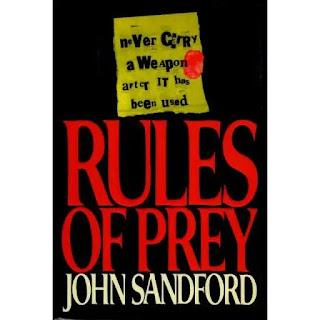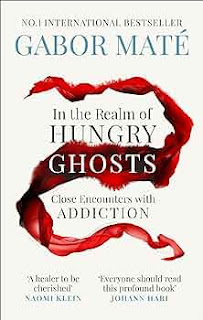Illicit-drug use in literature dates back well over 100 years. The song Cocaine Blues is featured in Walk the Line, the Johnny Cash bio-pic. The song (originally Little Sadie) also predates Johnny Cash by 30 years, at least.
But there is a reason drug use is prominent in songs, books, and movies. Like any other foible, substance use/abuse can lend gravitas to a character. Drug use also adds another dimension of danger to any story line...when done properly.
 |
| Not done properly |
Every drug aficionado, from Tommy Chong to your cousin Tim, will tell you that Sherlock Holmes used cocaine. Truly, Doyle’s consulting detective used cocaine as well as morphine, alcohol, and tobacco. Probably had a serious ‘Nilla Wafer habit, too but we don’t judge.
Motivation is the meat of the matter and most authors aim for the underlying drama rather than gratuitous sensationalism. Most authors.
How-NOT-to…
In Richard Stark’s The Hunter, Parker returns from left-for-dead betrayal to find his woman, Lynn with a debilitating heroin habit. After her introduction, Stark writes Lynn out with a convenient overdose because even in a crime novel featuring a murderous heister, the times, (published in 1962) required a didactic down-nose at addicts.
Stark’s depiction is hardly an anomaly. Popular fiction of the 20th Century rendered drug users as double-crossing junkies or tragic kids just trying to fit in. Easton Ellis’ Less Than Zero (published in 1985) mapped the latter cliché with all the subtlety of an ABC After School Special.
 |
| Needed more Kristy McNichol |
Other over-worked tropes included spoiled druggy playboys, (e.g. Thomas Harris' Mason Verger) and the virulent, “drugs turned ‘em into monsters,” sub-trope the most recent examply is meth-addled drug lord, Evelda Drumgo, (Thomas Harris, again). Dirty needles tied in her hair to infect others with HIV/AIDs is both exploitive and ridiculous. Hannibal was published in 1999.
Who’s done it well?
 |
| Cop tested, cop approved |
Hollywood "suggests" that all drug users are street hoods, prostitutes, and corporate raiders, (you know, assholes). However, doctors and police led all occupations in substance abuse for serveral decades. Sandford's writing reflects that reality.
Also, "Capslock" is proof that all writers struggles with character names
 |
| Have-the-munchies real |
Iain Levison’s How to Rob an Armored Car, (2009) is helmed by three stoners, Mitch, Doug, and Kevin. The guys are also the drug user that you're most likely to meet. A big-box store supervisor, a line cook, and a dog walker, these three could be our ne’er-do-well cousins who took the great recession on the chin. Their drug and alcohol use is nothing more than self-medication against a stacked-deck economy and situational-to-clinical depression.
The drug use is real, right down to preferences. Some like weed, others prefer pills, others still crave hard stuff—or hard action. Like Sandford's users, the drugs are a facit of the characters, not the entire identity of the characters.
 |
| Too real for cute remarks |
Where to start?
There is a wealth of clinical literature about addiction and drug use. For the lay-person, I cannot recommend Dr. Gabor Maté’s In The Realm of Hungry Ghosts highly enough. Maté has treated addiction for over 20 years. His prose are insightful, artful, and above all, compassionate. In fiction, James Fogle’s Drugstore Cowboy, is both artful and hard as coffin nails.
Mostly, though, your first step should be to assess your intent. Furthering your story, telling the truth, and depicting the user as a human being instead of a cardboard-cutout, are worthy goals in writing a habit. The best writers understand the base-most motivations for drug use: pain and necessity.
Motivation is why it matters
Davenport and Capslock use amphetamines to stay on the chase for the badmen and stave-off exhaustion and/or overwhelming emotions. Sandford's psychopath-pathologist, Michael Bekker, uses drugs to function among people—gauging whether the effects of PCP (stiff and wooden) or cocaine (aloof bordering obnoxious) will best help him play the grieving husband at his murdered wife’s funeral.
Temperament is an equal partner with need in determining the method. Sherlock Holmes primarily uses cocaine to treat his manic depression. A man of action, Holmes is a genius in motion but without a case, he is prone to the depths of his illness.
Mitch, Doug, and Kevin have none of Holmes' social cachet, money, or vocation. They use drugs to anesthesize the pain of long shifts, dehumanizing work, and can't-get-ahead economics. Sound like anyone you know who has a drink at the end of the day?
Neither Holmes, nor the boys have the tools to process or even discuss their depression. Those four characters are the most common form of addict—the high-functioning addict. They work, they pay bills, the support the economy. The substance use is simply to cope with it all.
Details clinical sources can impart
Once you’ve identified your character motivations, temperament, and drug of choice you’d do well to understand the drug effects. Cocaine and amphetamines are stimulates, (manic, obnoxious energy). Heroin and barbiturates are sedatives, (stupor and sleep). Mescaline/peyote (mushrooms) and LSD are hallucinogens/psychotropics, (sometimes pleasant delusions, sometimes, less pleasant). But there are always unintended/side effects just as there are bullshit stories about main effects.
I once heard about a guy who…
Another benefit of clinical sources over anecdotes is factual information. Anecdotes are prone to hyperbole and often lead to cliché. A popular “story” from my childhood was of the crazed PCP (phencyclidine, a hallucination-inducing anesthetic used in veternary medicine) addict who “took six rounds from a .357 magnum and kept coming.” I heard the same story in four different cities and saw it depicted in the movie Sharky’s Machine.
Truth is a compass needle, it only points in one direction
Paul McCartney met singer/songwriter Harry Nilssen at a party in the party-days of the 1970s. Nilssen offered McCartney PCP. McCartney asked if it was fun. Nilssen replied, “no” and McCartney declined. No gunplay involved.
Real people poop—unless they use excessively
In the movie Pulp Fiction, Vincent Vega spends more time chasing a toilet than Marsellus’ briefcase. Nowhere near as romantic as Tarantino’s languid shots of Vincent shooting up, the repeated scenes of him on the toilet, on the way to the toilet, and ultimate exit from the toilet represent the hard truth: opioids cause constipation. Or runaway diarrhea. It’s a crapshoot.
 |
| It's the shit, literally |
Our primary responsibility is to tell a story
Cocaine, PCP, heroin, and crystal methamphetamine all fell out of fashion like double-knit safari suits, because the consequences are often devastating. However, just like poor fashion choices, the drugs cycle back through every generation or so. Focus on the pain at the root of the addiction, what’s available to your protag. Chose a key detail and depict the use/effects honestly—and make sure it supports your story without becoming a carny act.
 |
| ...or something... |
Critics may complain about the alcoholic cop or coke-snorting socialite but cliché and trope are two sides of the same coin. A light touch is necessary. Ultimately, the difference between a trope and a cliché is application. The trope fuels your story. The cliché just wastes your readers’ time.
I do not own the images above. All are used for instructional/educational purposes, as covered by the Fair Use Doctrine.



